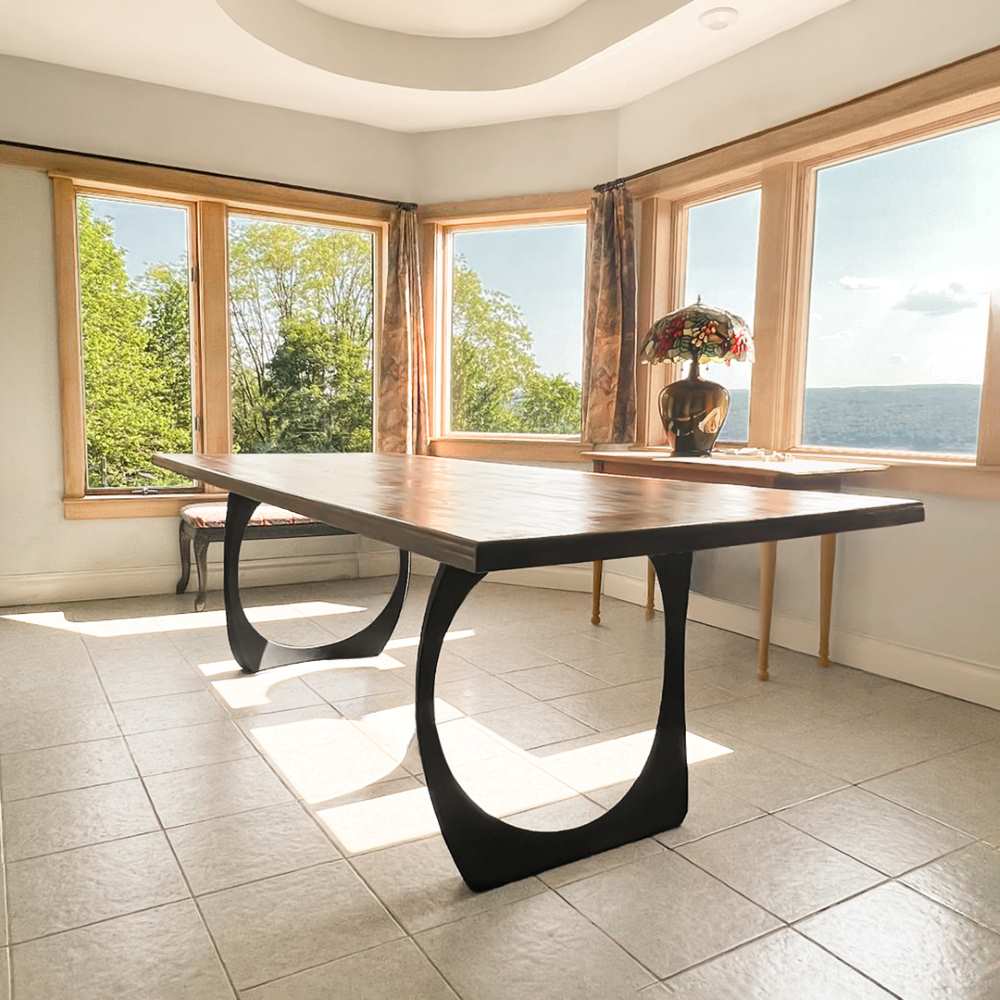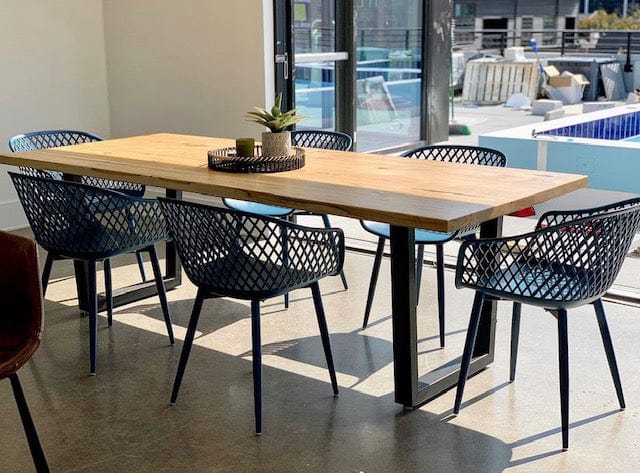From Traditional to Modern: Locate the Perfect Dining Area Table Legs for Your Style
The choice of eating space table legs plays a crucial function in specifying the total character of your area, bridging the space in between standard craftsmanship and modern-day aesthetics. While timeless styles such as cabriole and turned legs stimulate a feeling of classic refinement, modern styles like hairpin and geometric options offer a chance for striking aesthetic interest. Assessing the best equilibrium in between these styles calls for a nuanced understanding of your existing decoration and individual preference. As you think about these components, the inquiry continues to be: just how can you flawlessly integrate these varied leg styles to create a harmonious dining experience?
Recognizing Table Leg Styles
The range of dining room table leg styles can significantly affect both the appearances and performance of the space. Each leg style contributes special visual elements and sensible attributes, satisfying varied style preferences and use needs. Recognizing these designs is vital for selecting the best eating table that lines up with your general interior decoration vision.
For example, tapered legs offer a clean, traditional look that can boost an area's beauty, while pedestal bases give stability and maximize legroom, making them suitable for smaller sized rooms. Barrette legs, a trademark of mid-century modern design, introduce a commercial flair, enabling an airy, open feeling. In a similar way, trestle legs stimulate rustic charm, giving robust support and a feeling of timelessness.
Moreover, the option of materials plays a considerable duty. Wood legs can bring heat and appearance, whereas steel options typically communicate a streamlined, modern ambiance. Inevitably, recognizing table leg styles is important for producing a natural dining area that mirrors individual style while ensuring usefulness and convenience. By attentively thinking about these aspects, you can boost both the visual and useful allure of your dining area.
Standard Table Leg Options
When choosing eating space table legs, typical alternatives frequently symbolize ageless sophistication and workmanship. These layouts mirror an abundant heritage and a commitment to high quality, making them perfect for those that appreciate timeless looks.
One of the most legendary conventional leg styles is the cabriole leg, defined by its elegant bent shape. This style often features ornamental makings and is most generally found in Queen Anne and Chippendale furnishings. One more preferred choice is the turned leg, which boasts a series of smooth, rounded forms that supply a traditional appearance while keeping stability.
Additionally, the straight leg, while easy, offers a basic and durable framework that can blend seamlessly with a range of tabletop designs. For those attracted to ornate describing, claw-and-ball feet legs stimulate a sense of magnificence and can serve as a spectacular focal factor in any dining area.
Last but not least, stand bases, although not purely legs, offer a different traditional choice that allows for ample legroom and can be beautifully sculpted. Each of these typical leg styles adds to the overall setting of a dining space, marrying function with visual appeal.

Modern Table Leg Designs
Modern table leg designs provide a varied series of styles that highlight tidy lines and ingenious products. These styles often prioritize performance while functioning as striking centerpieces within a dining area. Minimal aesthetic appeals prevail, with legs crafted from products such as steel, glass, and engineered wood, which contribute to a ventilated and modern feeling.
One popular style is the barrette leg, defined by its slender, conical structure that supplies stability without frustrating the table top (dining room table legs). This design is usually discovered in mid-century modern-day furnishings and can easily enhance numerous dining table forms. An additional fad is the helpful site usage of geometric forms, where legs might handle unbalanced or angular types, adding visual passion and a touch of virtuosity

Blending Styles for Special Rooms
Usually, homeowners seek to create unique dining rooms that reflect their individual style by mixing different style components. This method permits for the consolidation of diverse aesthetics, resulting in an unified yet unique atmosphere. For example, pairing a rustic useful link wood table with sleek, contemporary metal legs can create an attractive contrast that raises the room's general allure.
Additionally, incorporating vintage table legs with contemporary table tops can stimulate a sense of history while preserving a modern-day sensibility. Such mixes not only showcase individual preference however also urge creative thinking, permitting house owners to curate a room that really feels both individual and welcoming.
Shade plays an important duty in this mixing procedure; selecting table legs that complement or contrast with the existing color pattern can enhance aesthetic interest. As an example, whitewashed legs can soften the boldness of a dark table surface, creating a balanced aesthetic.
Tips for Selecting the Right Legs
Selecting the right table legs is essential for accomplishing both performance and aesthetic appeal in your dining space. Begin by considering the overall design of your area. Conventional settings take advantage of legs that include detailed makings or transformed layouts, while contemporary rooms might call for streamlined, minimalist designs.
Following, examine the elevation and stability of the legs. dining room table legs. Conventional dining tables website here vary between 28 to 30 inches in height, so make sure the legs match this measurement for comfort. Additionally, robust products, such as hardwood or steel, can improve stability and durability
Examine the leg shape too-- choices consist of straight, tapered, or pedestal layouts. Straight legs offer a timeless appearance, while conical legs can include a touch of elegance. Pedestal bases provide sufficient legroom and are optimal for smaller sized spaces.
Final Thought
In recap, selecting the excellent dining area table legs calls for cautious factor to consider of both modern and typical styles. Conventional choices such as cabriole and transformed legs provide ageless sophistication, while modern-day styles like hairpin and geometric shapes provide a contemporary touch. By integrating leg style, height, and material with the total design, a cohesive and inviting atmosphere can be achieved. Eventually, the selected table legs ought to show the wanted aesthetic, boosting the dining experience within the room.
The selection of dining area table leg styles can substantially influence both the aesthetic appeals and functionality of the area. Inevitably, understanding table leg styles is essential for developing a cohesive dining location that reflects individual style while ensuring functionality and convenience.One of the most famous traditional leg designs is the cabriole leg, identified by its graceful rounded form. Straight legs provide a classic appearance, while tapered legs can add a touch of style.In recap, selecting the optimal dining space table legs requires cautious consideration of both modern and standard styles.